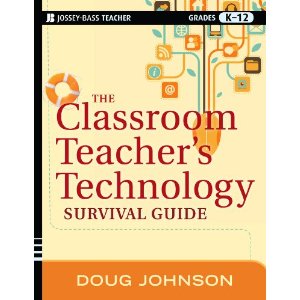What Does It Look Like? Part I: The Code 77 Rubrics
What Does It Look Like? Part I: The Code 77 Rubrics
Technology Connection, Dec 1997
Parents and administrators want “computer-literate” teachers. Students seek out teachers who meanlingfully use technology. And teachers themselves acknowledge that computer skills are increasingly necessary and important in fulfilling their professional duties. The specific computer skills which comprise computer literacy, however, are rarely articulated. “Computer literacy” as it applies to teachers can easily remain ill-defined: a politically correct buzz word without meaning or purpose.
When Mankato Area Public Schools began its formal staff development program to train teachers how to use technology five years ago, I wrote a series of rubrics (graduated performance indicators) which described what the district expected a computer using teacher to be able to do after 30 hours of formal computer instruction and six to nine months of practice. (The CODE 77 stands for Computers On Desks Everywhere in District #77, the name of our program.)
These rubrics primarily address professional productivity. They are the foundation on which more complex technology and technology-related professional skills are built. Teachers who have mastered these skills are able to use the computer to improve their traditional instructional tasks such as writing, record-keeping, designing student materials, and presenting lessons. These skills also build the confidence teachers need to use technology to restructure the educational process. (For rubrics describing the Advanced Teacher Computer Use skills, see next month’s article “Rubrics for Restucturing.)
Each of the ten rubrics has four levels:
Level 1: Pre-awareness
Level 2: Awareness
Level 3: Mastery
Level 4: Advanced
Prior to training, we assumed most teachers would be at level 1 or 2, and our training efforts were designed with that assumption. By the end of the training, we anticipated teachers would be at level 3 or 4 in most skill areas, and have gone up at least one level in all areas.
These rubrics then have served two purposes in our district. By asking teachers to complete an anonymous self-assessment using the rubrics before training and again after training, we have been able to judge the effectiveness of our staff development efforts. Simple graphs showing the percentage of training participants at each level pre and post training are constructed. These results are shared with the staff development committees and the administration.
The rubrics also serve to provide a “road map” for teachers wanting to improve their computer skills. By examining the specific skills described, teachers know in what areas they need to continue to take classes or practice.
Below are both the instructions to teachers for competing a self assessment and the rubrics themselves. Please feel free to use and modify the rubrics for your district’s specific needs and as technology changes. These rubrics can also be modifies to help benchmark student performance as well. (See Jamison McKenzie’s adaption of these rubrics for that purpose at <http://wwwbhs1.bham.wednet.edu/>)
The most recent version of the Basic CODE 77 Rubrics can be found here.





Reader Comments